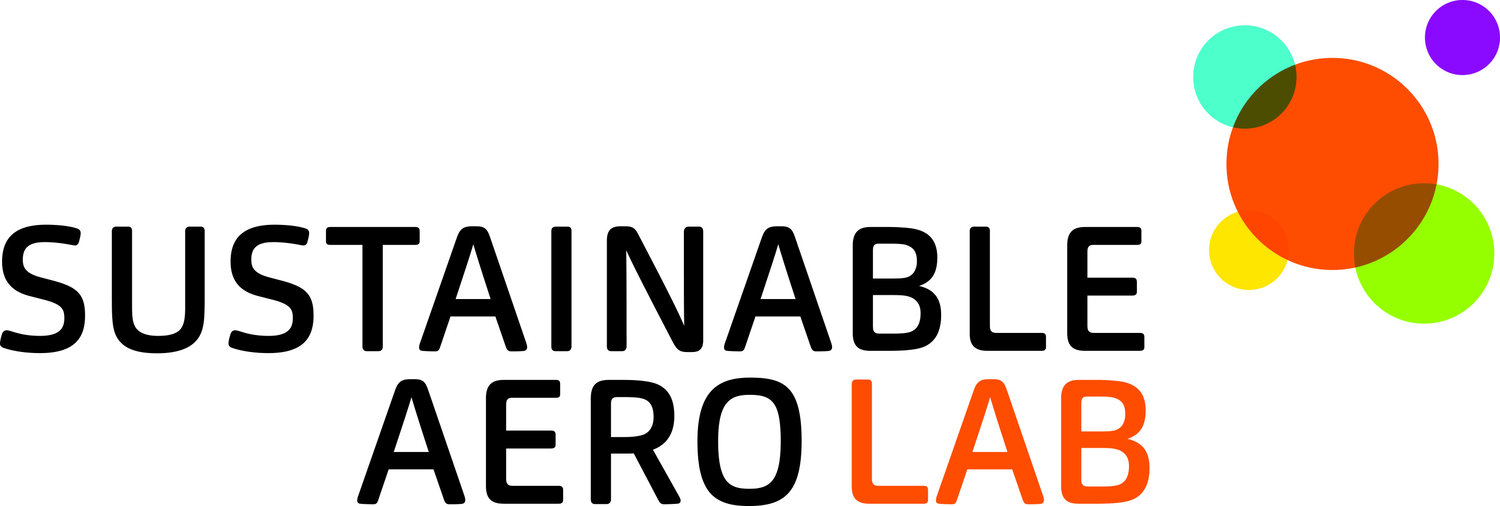Focus Areas
We focus our efforts on projects that can tangibly reduce the climate footprint of aviation, including carbon and other emissions.

SAF (Sustainable Aviation Fuels)
Sustainable Aviation Fuels appear as the quickest route for decarbonizing aviation by replacing fossil fuels in blends with increasing SAF fractions. SAF presents a huge advantage in accelerating net-zero flight while still using the installed engine base and present-day aircraft technology, as well as airport and logistic infrastructure. Supply will focus on biofuels in the short-term, switching to synfuels/e-fuels/PtX in the medium- and long-term.
Challenges: Today’s supply of SAF is just a tiny fraction of the fossil fuels consumed every year by the aviation industry. Hence, a massive scaling up is needed, requiring a parallel increase of green energy supply, while costs must come down dramatically. This SAF supply line is fragmented and loaded with uncertainty; however, demand can only increase, also due to mandates in the EU and incentives in the USA.
Hydrogen in Aviation
Hydrogen use in aviation is still in its infancy. However, due to its energy density and the combustion releasing no greenhouse gases, hydrogen is a promising path toward true zero-carbon flight. Hydrogen propulsion can be implemented by using fuel cells generating electricity to power electric motors and burning it in turbine engines, much resembling those in service today.
Challenges: Hydrogen is usually stored on aircraft in its liquid form, LH2, at the cryogenic temperature of -253°. This demands innovations in the propulsion system and onboard storage and a new generation of aircraft design and airport infrastructure. Further, the entire hydrogen supply chain will require massive upscaling in production and logistics, again supported by a concurrent increase in the availability of renewable energy.
Electrification
Pure battery-powered electric propulsion brings aircraft emissions to true zero. Even hybrid-electric architectures save substantial amounts of CO2. Battery-powered 9- to 30-seat airplanes are expected to achieve meaningful ranges in the coming years. However, the energy density of present-generation batteries is orders of magnitude below the requirements of long-haul flights; based on technology trends, this won’t change any time soon. On a positive note, propulsion technologies such as ducted fans and distributed electric propulsion can allow further efficiency gains while capturing the full advantage of electric propulsion.
Challenges: Safety is a concern due to the risk of thermal runaway and explosion in lithium batteries. Lifecycle is another issue: while 1000 charging cycles of today’s batteries easily last 300,000 km on a car, in aviation, this could mean less than 6 months of operation for a battery pack. This would result in a massive number of batteries to be repurposed or recycled. Another environmental issue is related to the impact of mining raw materials.
Novel aircraft designs, materials and design processes
An enormous contribution to reducing aviation's environmental impact can be delivered by novel aircraft concepts boosting higher aerodynamic efficiency and lower drag. Analogous improvements can be achieved through lighter airframes, enabled by innovative lightweight materials and structural optimization, supported by emerging production techniques.
Challenges: The aviation industry needs these sustainable innovations now, not in another 20 years. That's why the development and certification process of new aircraft and aerospace technologies must be accelerated, as made possible by the increasing prowess and reliability of computational tools. We welcome startups proposing innovations in aircraft design and lightweight materials, as well as digital design, simulation, and prototyping.
Better Operations
Practices and regulations governing air traffic are often the same as 30-70 years ago, offering ample opportunities for pursuing higher efficiencies. Flight altitude and routing also play a major role in producing non-CO2 glass house phenomena related to contrails. Novel procedures and algorithms can lower emissions by promoting optimised aircraft routing, flight trajectories and airport operations. All of this can be achieved relatively short-term, without requiring the hefty investments associated with the development, certification and deployment of new hardware.
Challenges: Entrenched old ways of operating and fragmented governance are the main hurdles. Likewise, we still have much to learn about non-CO2 effects. That’s why we welcome teams willing to challenge this status quo and help save billions of tons of fuel and emissions.
Efficient Propulsion
Efficient propulsion relates to architectures based on internal combustion engines (piston and turbine) capable of superior fuel saving and lower emissions. Prop fan architectures also fall in this space. While high propulsion efficiency is critical to lower the emissions from fossil fuels, it would not be less crucial as the aviation industry switches to SAF and/or hydrogen, two commodities that will remain exceedingly scarce and expensive at least until 2040-50.
Challenges: Developing new propulsion architectures and aircraft engines is a complex and costly undertaking that demands significant financial resources, time, and expertise. This is due to the length and complexity of the development, certification, and industrialization phases.
Get In Touch
If your project falls into the scope outlined here please get in touch and check if we can help your startup.
If you feel your topic is not specifically mentioned but falls into the general line of thought that we have outlined, still please do get in touch.
We are stage agnostic and encourage you to apply regardless of the funding stage that you’re at.
Value Chain Scope
We are interested in projects along the entire value chain. Example: A novel approach for welding a Hydrogen tank might qualify as well as a new airframe design. Submissions may focus on passenger and cargo aircraft as well as drones.
Commercial Scope
Any project that we support should have the long-term perspective for successful commercialization. We are however stage agnostic, so even if you are very early, we encourage you to apply.






